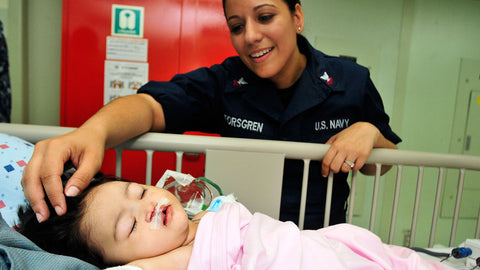There’s nothing more heartwarming and engaging than the smile of a child. That innocent, sometimes toothy grin enables us to share a moment of joy with a youngster that is priceless.
That smile might belong to your little boy as he’s cooling off under a sprinkler. Or it might belong to a neighborhood kid finding pure happiness in getting her face licked by a new pup.
A child’s smile can also have a way of transporting us back to the more simple and honest times of our own childhood, providing a temporary escape from the often complicated world of adults.
However, the simple act of flashing a smile is a little more involved and painful for some children. Nearly 1 in 750 babies are born with cleft lip palate, the fourth most common birth defect in the United States, according to the Central New York Cleft and Craniofacial Center.
Cleft lip palate is a facial malformation that develops in the early stages of pregnancy. A cleft palate occurs when the tissue forming the lip does not close completely, creating a gap between the child’s nose and upper mouth. This congenital defect also affects the roof of the mouth, causing misalignment or displacement of the teeth. Speech problems are common in conjunction with this deformity.
Serious ear problems are another major complication often associated with cleft lip palate. Improper functioning and angling of the Eustachian tubes can lead to the buildup of infection-causing bacteria that can eventually cause deafness.
Cleft Palate Repair and Treatment
As heartbreaking as it may be for families to receive the news that their child has cleft lip palate, it’s reassuring to know health care professionals now have a wealth of experience in treating this physical defect.
As surgical procedures have become more refined, specialists from different disciplines often join forces to address the multiple health concerns associated with cleft lip palates. These include:
Otolaryngologists: Also known as ear, nose and throat specialists. Treat ear problems and other possible sinus complications.
Maxillofacial Surgeons: Responsible for repairing the cleft lip palate.
Plastic Surgeons: Attempt to normalize the patient’s facial features by reforming and restructuring the area affected by the cleft palate.
Nutritionists: Confronts feeding obstacles associated with cleft lip palate to ensure infants receive proper nourishment.
Speech Pathologists: Addresses patient’s language and communications skills.
Several specialty health care facilities primarily focusing on the repair and treatment of cleft palates and cleft lips now exist throughout the country. Many of these facilities include a team of the specialists mentioned above in order to maximize the quality of short-term and long-term treatment. Post-surgery care can last for years as medical personnel keep a close watch on the development of speech and other areas affected by cleft lip palates as patients get older.
About The Author
Wade R. Cressman, MD, Pediatric ENT, is the author of this article about pediatric ear nose and throat concerns as they relate to cleft lip palate. With offices located throughout Florida, Pediatric ENT offers convenience to families with children affected by ear, nose and throat issues.
Syndicated by EzineArticles

